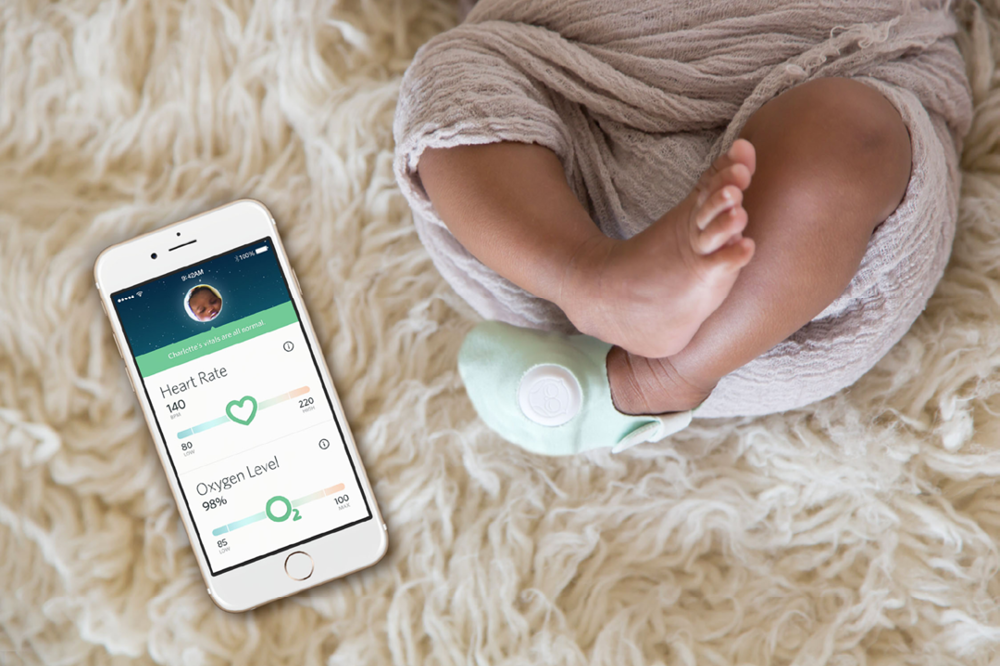Ingrown toenails may be a big problem, but that doesn’t stop them from invading small feet. In fact, ingrown nails (called onychocryptosis in the medical world) frequently show up on the feet of newborns, babies and children. Here are the ingrown toenail symptoms to look for as well as the best way to treat ingrown toenails on babies and children.
How To Tell If Your Baby or Child Has an Ingrown Toenail

An ingrown toenail is a condition in which the nail grows in such a way that it cuts into one or both sides of the nail bed that surrounds it. It can show up on any toe, but it typically affects the big toe in both adults and children.
Typical early signs of an ingrown toenail include redness and swelling of the skin at the edge of the affected nail. The redness and swelling may be accompanied by white or yellowish pus or fluid, which is a sign infection is present.
Ingrown toenails can be quite painful, so your child or baby’s toes may be tender to the touch, both from fingers as well as shoes and socks. Toddlers may crawl or walk abnormally, and babies may cry and pull on the affected toe.
Why Does My Baby or Child Have an Ingrown Toenail?
Most ingrown toenails develop from improperly cutting the toenails. Nails should be cut straight across, never in a curved shape. It’s also advised to never cut a child or a baby’s cuticles.
Tight-fitting shoes and socks that squeeze and pinch the toes and feet can also cause ingrown toenails.
RELATED: Why Socks May Actually Be Bad For Babies
What Is the Best Way to Treat My Child or Baby’s Ingrown Toenail?
The best way to take care of an ingrown toenail on a baby or child is to soak the affected foot in warm, soapy water for about 15 minutes three times per day. If this proves to be difficult, perhaps try putting your child in the bathtub a few times per day. Babies and young children often love bath time, especially if they're allowed to splash and play.

YOU MAY ALSO LIKE:
After soaking the ingrown toenail, which softens the skin and helps dislodge the nail, dry the foot and apply an over-the-counter antibiotic ointment to the affected area. If it’s possible, you may want to try separating the nail from the sensitive skin by wedging a small piece of cotton or gauze under the edge of the nail. Be sure to change the piece of cotton or gauze several times per day to make sure it’s clean and won’t cause further infection. This may be a painful process, so it might be best to try taking this step while your child is sleeping.
Some doctors recommend giving your baby or child small doses of over-the-counter pain medication like Tylenol or Motrin. Check with your child’s doctor or pediatrician before administering any type of medication, especially if your baby is younger than three months old. (Never give your baby or child aspirin, because it’s been linked to a serious condition called Reyes syndrome, which causes swelling of the liver and brain).
While the ingrown nail heals, it’s best to have your child go barefoot or wear loose-fitting shoes and sandals. This will help keep the tender area from experiencing unneeded pressure.
How Long Will My Baby or Child’s Ingrown Toenail Take to Heal? When Should We Visit a Doctor?
If the above treatment methods are taken, ingrown toenails in babies and children should heal within a few days. Ingrown nails that do not heal within a few days are best examined by a doctor. Call the doctor sooner if the abscess is filled with pus or if other signs of infection are present.
Never try cutting or filing your baby or child’s ingrown toenail yourself, as the problem may become worse and serious infection can occur.
How Do I Prevent My Baby or Child From Developing Ingrown Toenails?
As we mentioned above, most ingrown toenails develop from improperly cutting the toenails. Toenails in both adults and children should be cut straight across, never in a curved shape.
RELATED: How To Shop For Children's Shoes
Toenails that are too long may get snagged on socks, shoes and toys. This can ultimately rip the nail, leaving it short and susceptible to becoming ingrown. Therefore, toenails should also be trimmed frequently — but not to the point where they’re too short, as this increases the likelihood that they will become ingrown. It’s best to leave a small amount of the white part of the nail and file the edges so they are smooth.
If your baby or child resists having his or her nails trimmed, try cutting the nails while he or she is sleeping.
Another way to prevent ingrown toenails in babies and children is checking to make sure their shoes fit properly. Youngsters’ feet grow quickly, so it’s a good idea to frequently check and make sure their footwear isn’t pinching or squeezing their toes.


